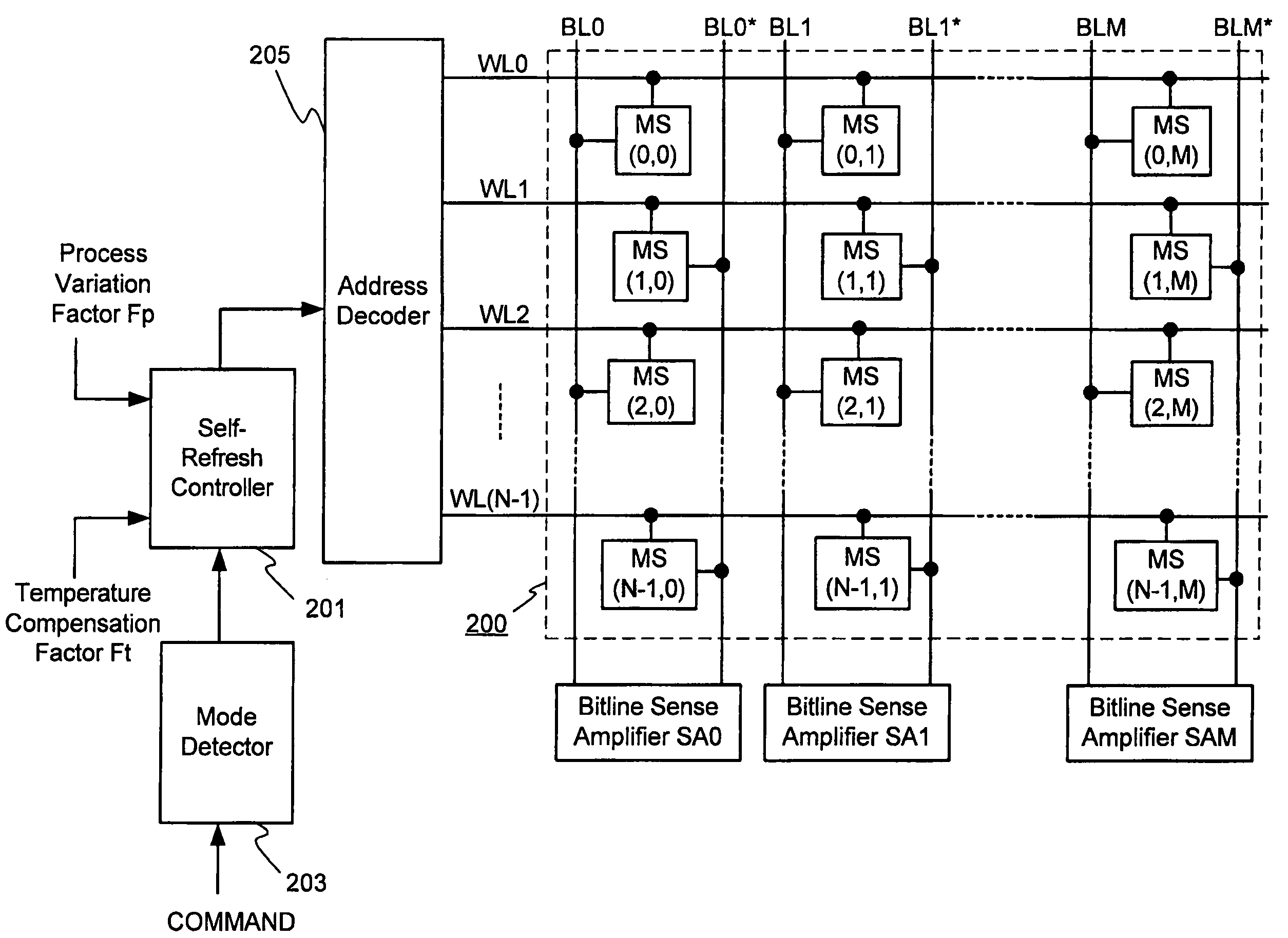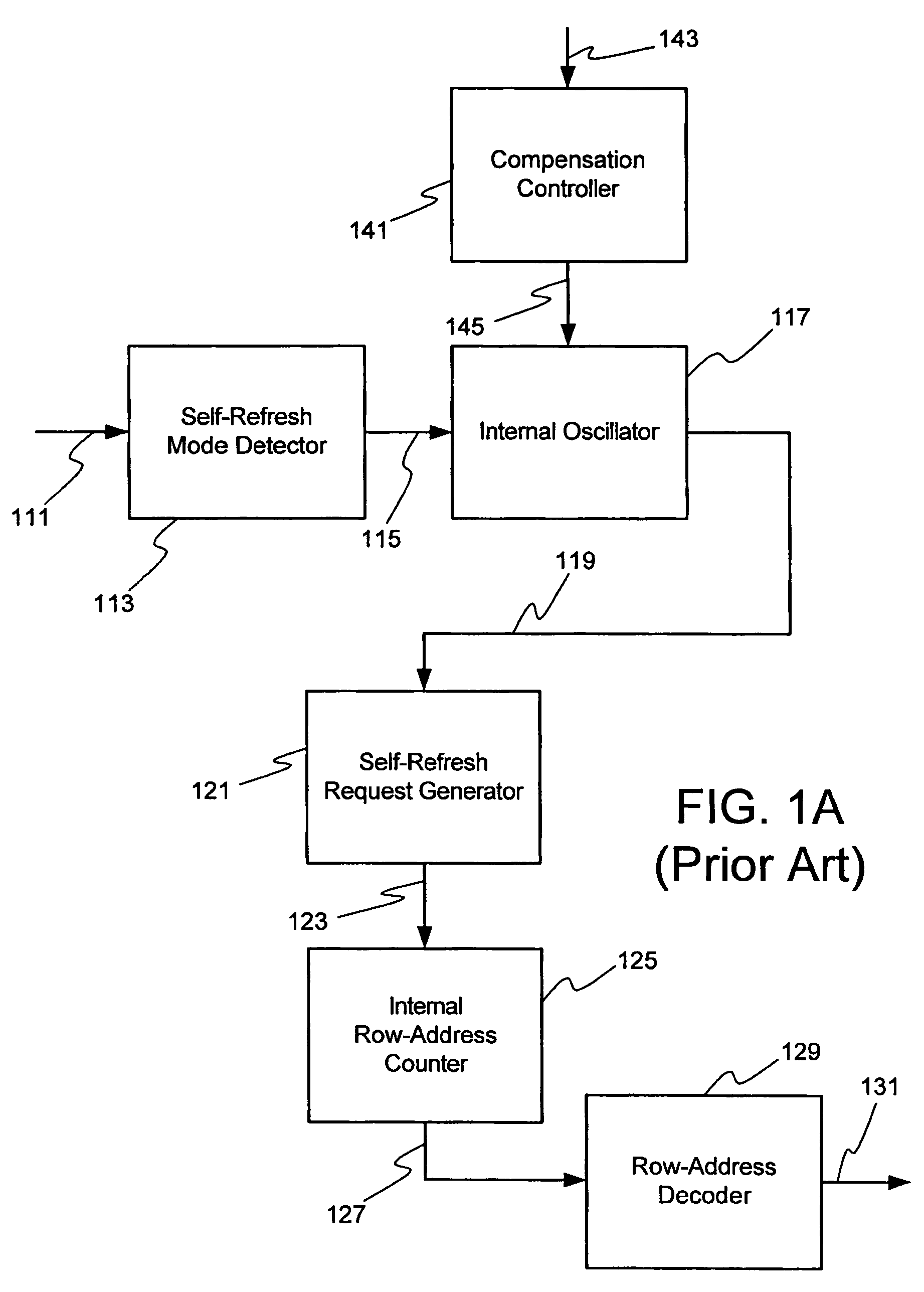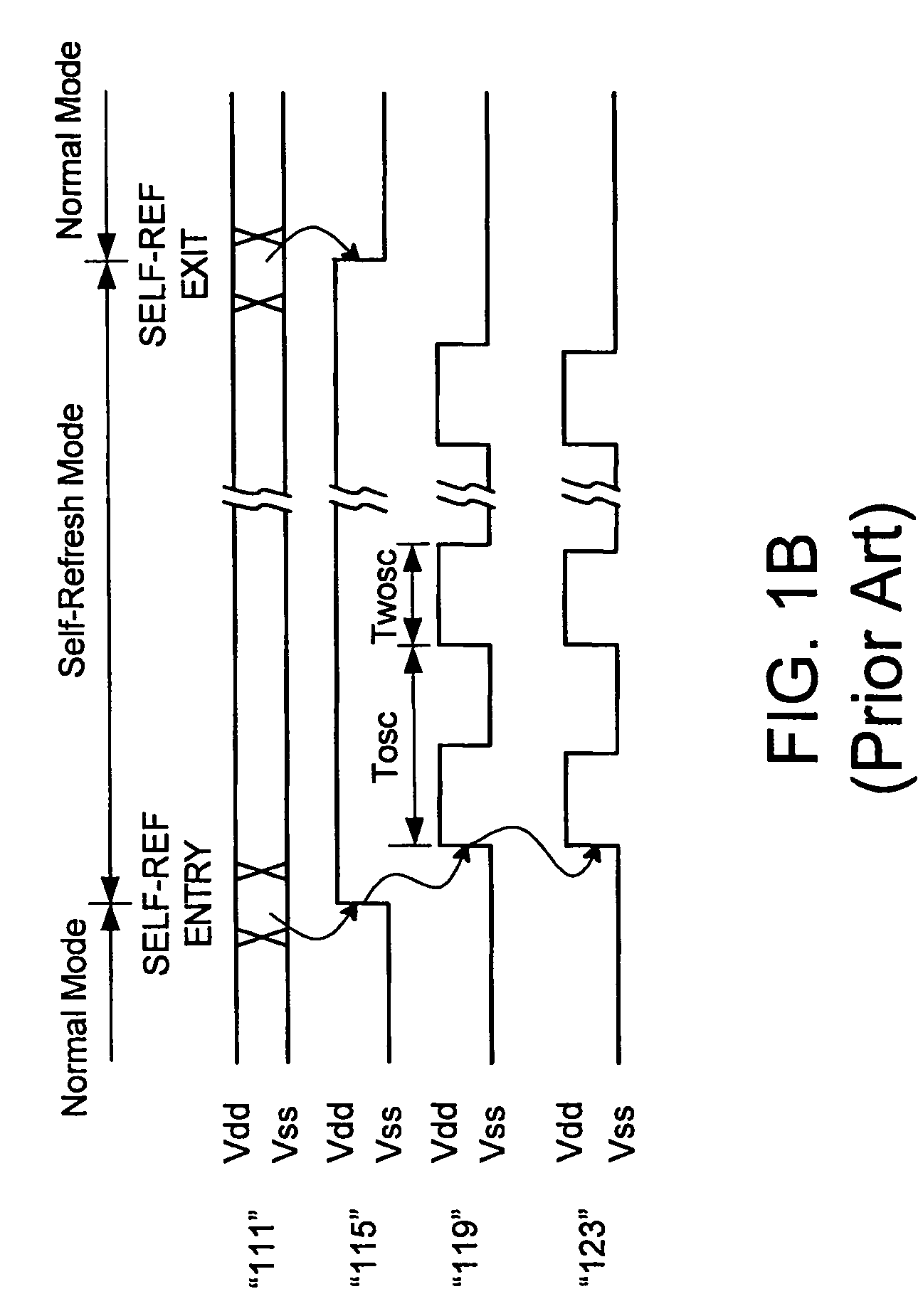Dynamic random access memory device and method for self-refreshing memory cells with temperature compensated self-refresh
a memory cell and random access technology, applied in the field of dynamic random access memory device and self-refreshing memory cells with temperature compensation self-refresh, can solve the problems of reducing the threshold voltage consuming more power in normal operation as well as in power saving mode of operation, and unable to ensure the refresh characteristics of the mim cell for a long tim
- Summary
- Abstract
- Description
- Claims
- Application Information
AI Technical Summary
Benefits of technology
Problems solved by technology
Method used
Image
Examples
Embodiment Construction
[0064]In the following detailed description of sample embodiments of the present invention, reference is made to the accompanying drawings which form a part hereof, and in which is shown by way of illustration of specific sample embodiments in which the present invention may be practiced. These embodiments are described in sufficient detail to enable those of ordinary skill in the art to practice the present invention, and it is to be understood that other embodiments may be utilized and that logical, electrical, and other changes may be made without departing from the scope of the present invention. The following detailed description is, therefore, not to be taken in a limiting sense, and the scope of the present invention is defined by the appended claims.
[0065]Generally, the present invention provides the self-refreshing of memory cells within an array included in a dynamic random access memory (DRAM) device. The DRAM devices can be a discrete component or embedded in a larger sy...
PUM
 Login to View More
Login to View More Abstract
Description
Claims
Application Information
 Login to View More
Login to View More - R&D
- Intellectual Property
- Life Sciences
- Materials
- Tech Scout
- Unparalleled Data Quality
- Higher Quality Content
- 60% Fewer Hallucinations
Browse by: Latest US Patents, China's latest patents, Technical Efficacy Thesaurus, Application Domain, Technology Topic, Popular Technical Reports.
© 2025 PatSnap. All rights reserved.Legal|Privacy policy|Modern Slavery Act Transparency Statement|Sitemap|About US| Contact US: help@patsnap.com



